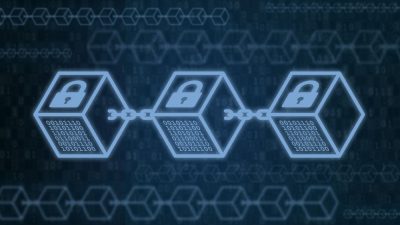Highlights:
- Source code security is like the guardian of a program’s innermost secrets, ensuring that its original code remains safe from prying eyes, meddling hands, and would-be thieves.
- To mitigate the risk of human error, such as mistyping URLs or overlooking inconsistencies in cryptographic hash values, leverage automation wherever possible. By automating these processes, you ensure thorough validation and enhance the security of your software supply chain.
As the frequency and impacts of cyberattacks on software supply chains escalate, it’s evident that this trend shows no signs of abating. A comprehensive study conducted in 2022 uncovered a staggering 88,000 recorded instances of supply chain attacks, marking a whopping 633% increase compared to the preceding year.
This surge follows previous escalations of 650% in 2021 and 430% in 2020. With such pronounced growth, the trajectory suggests an impending intensification of concerns surrounding source code security in the foreseeable future.
While high-profile breaches involving large corporations and government entities often dominate headlines, it’s crucial to note that small businesses bear the brunt of approximately 43% of cyberattacks.
Every software company must implement comprehensive safeguards to fortify source code security effectively.
Let’s dig deeper into this concept of code security solution.
What Is Source Code Security & Why Is It Important?
Source code security is like the guardian of a program’s innermost secrets, ensuring that its original code remains safe from prying eyes, meddling hands, and would-be thieves.
It’s a shield against both internal blunders and external threats, shielding against mishaps where team members fumble with sensitive code and cyber attacks launched by hackers aiming to breach defenses.
This shield is more than just a protector; it’s a crucial defender of intellectual property rights, a sentinel against data breaches, and a guardian of the integrity of software creations. To fortify this shield, organizations deploy an arsenal of measures — robust access controls, diligent source code security audits, fortified code repositories, encryption fortifications, and vigilant code analysis tools—all working tirelessly to maintain the sanctity and security of the source code, ensuring that the heart of every software endeavor remains steadfast and secure.
Your source code’s security is paramount, defining your product’s credibility and competitive advantage. Insufficient protection poses severe risks:
- Intellectual property theft: Unauthorized access allows theft, replication, or alteration, endangering your intellectual property.
- Data breaches: Vulnerabilities compromise private data, algorithms, and credentials, leading to damaging breaches.
- Competitive disadvantage: Compromised code gives rivals insights, jeopardizing your market position.
- Reputational harm: Breaches damage your reputation, eroding trust and confidence.
- Legal repercussions: Neglect invites legal action, defending your intellectual property rights.
To safeguard your software’s integrity, implement stringent source code security measures to protect against unauthorized access and fortify defenses against advanced threats.
What Are The Source Code Security Best Practices?
Recently, attacks on the software supply chain, such as those witnessed in incidents like SolarWinds and NotPetya, have captured considerable media spotlight. These attacks entail infiltrating a vendor’s source code, subsequently utilized against the vendor’s client base.
The probability of organizations becoming targets of such attacks is on the rise. Hence, it is imperative to prioritize adherence to fundamental source code security best practices for internally developed and externally sourced code.
This proactive approach is essential for mitigating the risk of software supply chain attacks, preventing compromise, and sidestepping negative publicity.
-
Obtain external, secure source code
Validate the authenticity and integrity of any externally sourced code, whether for internal deployment or integration with other products or services. Obtain source code from reputable sources and employ integrity-checking methodologies such as cryptographic hash verification.
To mitigate the risk of human error, such as mistyping URLs or overlooking inconsistencies in cryptographic hash values, leverage automation wherever possible. By automating these processes, you ensure thorough validation and enhance the security of your software supply chain.
-
Restrict access and secure storage of source code
Ensure the safety of your source code by storing it in secure code repositories with robust security measures. Grant permissions to individuals, applications, and services strictly based on their required access levels, and exercise caution when assigning permissions that allow modifications to the source code.
Whether the access is granted to a human user or an automated system, authenticate each user with modification privileges and configure repositories to maintain comprehensive audit logs of all modifications made.
Additionally, it mandates that all third-party source code provided by developers is stored within the designated code repositories to uphold security standards and centralize control over the source code assets.
-
Conduct source code examination
Employ static analysis tools to thoroughly scrutinize your code for vulnerabilities and the potential presence of malicious code, irrespective of its origin or creation method. Avoid limiting source code security scanning to the initial acquisition phase; ensure continuous or regular scanning using dedicated tools.
While automated tools can handle the bulk of the analysis, human experts need to review and delve into the results. Additionally, ensure that your procedures and incident response plans are well-prepared to address the discovery of malicious code, enabling swift and effective mitigation actions.
-
Identify source code components
There’s a growing recognition within the software development and security communities of the critical importance of understanding the software components utilized and procured by businesses.
Stay vigilant for announcements about newly discovered vulnerabilities within these components. Security teams can swiftly respond to emerging threats by being aware of such vulnerabilities.
Adopting a software bill of materials detailing the components within the code is increasingly commonplace. Alternatively, security teams can leverage source code security analysis tools designed to analyze the composition of source code, enabling the identification of any third-party components being utilized.
This proactive approach enhances visibility into the software stack, empowering organizations to effectively manage and mitigate security risks associated with source code components.
In a Nutshell
As software supply chain attacks surge, safeguarding source code security is imperative. Source code serves as a guardian, protecting against theft, breaches, and reputational harm. Stringent access controls, secure storage, and regular code examination are adopted to fortify defenses.
Are you still wondering how to secure source code? First, prioritize obtaining secure source code, restrict access, and conduct thorough analyses to identify vulnerabilities. Additionally, measures should be implemented to identify source code components, enhancing visibility and mitigating risks.
By adhering to these best practices, organizations can fortify their software integrity, mitigate supply chain risks, and safeguard against potential threats and reputational damage.
Dive into the world of security with our comprehensive security-related whitepapers.






































































